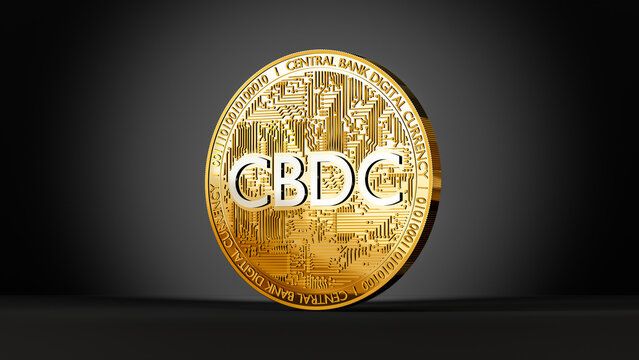CBDCs in India: Where Do We Stand?

Central Bank Digital Currencies (CBDCs) are changing the financial landscape across the world, including India. The Reserve Bank of India (RBI) has been testing out its own digital cash, the e-Rupee (e₹), since 2022. As of September 2025, CBDC India remains in its pilot project phase, with use cases expanding. However, there is no big rollout yet. This cautious approach shows the RBI’s intent of making payments simple and secure. It will also drive financial inclusion while ensuring stability in the banking system.
What is CBDC?
A Central Bank Digital Currency (CBDC) is a digital version of a country’s fiat money, issued and regulated by the central bank. In India, the CBDC represents the e-Rupee, which carries the same value as physical rupees and functions as legal tender. Unlike cryptocurrencies, CBDCs are centralised and designed to ensure trust, stability, and regulatory oversight.
CBDC can reduce reliance on cash, enable traceable transactions to curb illicit activities, and integrate with existing payment systems like UPI. The e-Rupi digital currency is therefore positioned as a secure bridge between traditional money and new-age digital payments.
India’s CBDC Journey
India has steadily embraced digital payments over the past decade. Milestones like the Unified Payments Interface (UPI) in 2016 revolutionised peer-to-peer transfers, while government initiatives such as e-RUPI vouchers demonstrated targeted digital disbursements. India’s strong digital ecosystem which is characterised by billions of UPI transactions each month provides the foundation for CBDC adoption.
The RBI formally introduced its CBDC pilot project in 2022, starting with wholesale use (e₹-W) for interbank settlements, followed by retail (e₹-R) for public use. These pilots are designed to measure transaction efficiency, integration with UPI, offline use, and programmability for targeted applications such as subsidies.
The retail pilot had expanded to 17 banks and over 6 million users By March 2025, with circulation crossing ₹10 billion. This is a 334% jump compared to 2024. Wholesale pilots are being tested for government securities and cross-border payments, reflecting the RBI’s focus on scalability and international relevance.
Benefits and Opportunities
The introduction of CBDC payment systems offers multiple advantages for India’s economy:
- Reduced cash reliance: Printing and distributing physical notes is costly. CBDCs could significantly cut these expenses.
- Faster and secure transactions: CBDCs make payments traceable and will reduce fraud and enhance transparency.
- Financial inclusion: Digital wallets linked to CBDC India could empower unbanked populations in rural regions.
- Cross-border efficiency: Settlements in CBDC currency may cut delays and reduce fees compared to traditional systems.
- Programmability: Governments could design programmable CBDCs to ensure subsidies or benefits are spent as intended.
Together, these benefits highlight how central bank digital currency in India can fuel innovation while supporting growth and stability.
Challenges and Risks
Though CBDCs offer several benefits, challenges remain. Like any innovation, the RBI’s CBDC pilots face hurdles. Below are some of the most significant concerns:
- Cybersecurity threats: As a fully digital currency, CBDCs are vulnerable to sophisticated attacks.
- Privacy versus traceability: While traceability curbs money laundering, excessive surveillance could raise civil liberty issues.
- Impact on banks: If individuals prefer storing money in CBDC wallets, banks could lose deposits, affecting liquidity and profitability.
- Adoption challenges: With UPI already widely used, convincing users to adopt CBDC digital currency requires clear incentives.
- Offline reliability: Ensuring smooth operations in areas with poor connectivity is a technological challenge.
Balancing innovation with these risks is essential for India’s CBDC journey.
Also read: FAQs: CBDC Explained
CBDC vs Cryptocurrencies and UPI
CBDCs are distinct from both cryptocurrencies and existing payment platforms. While cryptocurrencies like Bitcoin are decentralised, volatile, and not backed by governments, CBDCs are centralised, stable, and regulated by the RBI. This stability makes them more suitable as legal tender.
UPI, meanwhile, is not a currency but a payment interface enabling instant bank-to-bank transfers. A CBDC currency could integrate with UPI, using its infrastructure for wider adoption, but the two serve different purposes: UPI facilitates transactions, while CBDCs represent the money itself.
This layered system shows how CBDCs, cryptocurrencies, and UPI can coexist while fulfilling different roles in India’s digital financial architecture.
The India Context
CBDC India holds particular promise in bridging the financial inclusion gap. With millions still unbanked, a CBDC wallet could serve as a low-cost, accessible entry point into the digital economy. For banks and fintech players, it may prompt innovation in customer services, compliance, and technology.
Here, exchanges like Giottus may play an important role by adapting infrastructure to support CBDC integration. As a platform already focused on secure INR trading pairs, Giottus exemplifies how domestic exchanges could act as bridges between traditional finance, CBDCs, and the broader crypto ecosystem.
Future Prospects and Global Alignment
Globally, more than 135 countries are exploring CBDCs, with several already piloting or launching digital currencies. India’s deliberate pace reflects its cautious strategy, prioritising financial stability over speed. Cross-border trials, integration with UPI, and programmable features are all on the horizon.
The future of CBDC payment systems in India depends on user adoption, security safeguards, and balancing privacy with traceability. If successful, the RBI’s CBDC pilot project could set a global benchmark, positioning India as a leader in digital currency innovation.
Path to Transformation
India’s move towards the e-Rupee demonstrates its ambition to modernise money. The central bank digital currency RBI pilots highlight opportunities for efficiency, inclusion, and innovation, but challenges around privacy, cybersecurity, and banking disruption remain. With careful design and phased rollout, CBDCs can complement UPI and reshape India’s financial ecosystem.
As of September 2025, CBDCs remain in pilot phase, but their steady progress underscores their potential to transform payments in India. For businesses, individuals, and platforms like Giottus, adapting early to CBDC currency will be key to thriving in the next era of digital finance.
Updated on: 23rd September, 2025 4:49 PM